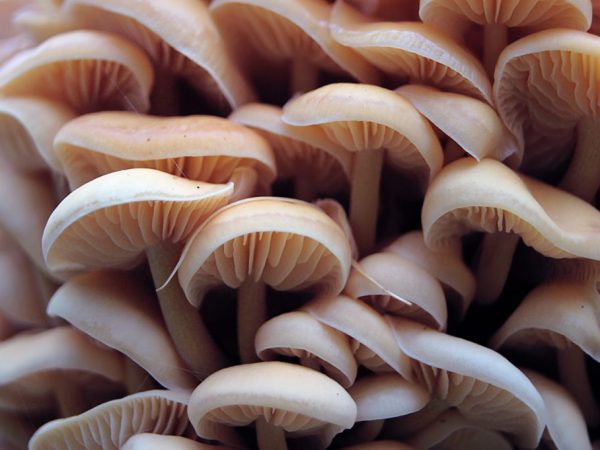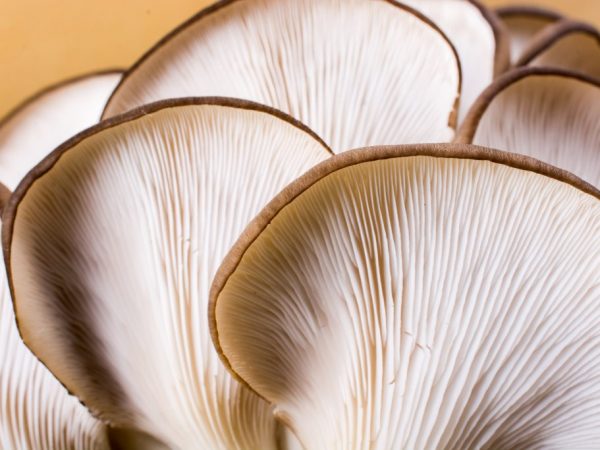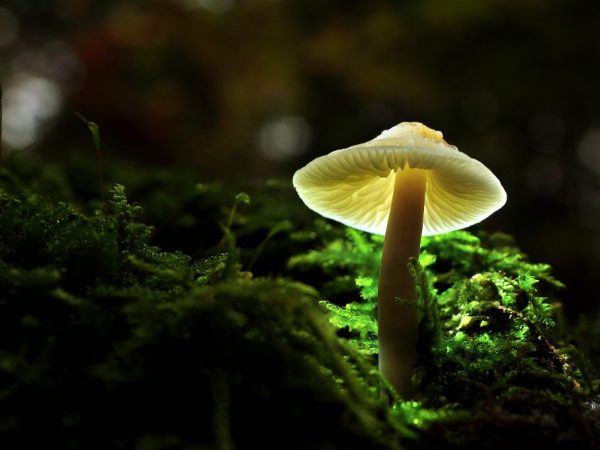Edible and poisonous lamellar mushrooms
Every experienced mushroom picker knows that there are two large groups of mushrooms, clearly separated by external features, in particular by the appearance and, accordingly, the structure of the hymenophore. Lamellar mushrooms are represented by a large number of species. They rank second in taste, but at the same time they are very popular among lovers of "forest meat".

Edible and poisonous lamellar mushrooms
Features of lamellar mushrooms
Unlike spongy, caps of lamellar mushrooms have a spore-bearing hymenophore in the form of radial plates that diverge from the stem to the edges of the cap. The shape of the upper part of the fruiting body can be different, depending on the species. Sometimes the caps look like concave cones, change during the maturation of the mushroom, or fit snugly against the stem. Some specimens have a thin film covering the young fruiting body as it grows. Over time, it breaks and forms a specific sac at the base of the leg - a volva. In addition to this common shell, there is also a private one - it covers the young spore-bearing layer until the spore ripens. Then it breaks and a belt is formed under the cap.
The fruit body of these representatives of the mushroom kingdom is fragile and easily breaks. The stem can be hollow or dense, but much thinner than that of the spongy congeners. When cut from the fruiting body, milky juice is often released, in the absence of its types are called breadcrumbs - they dry out in the sun, and do not rot.
The range of colors is widely presented: it includes light, lilac, brown, yellow and red tones.
Many delicious lamellar mushrooms have poisonous counterparts, differing only in color or smell. Most commonly, the edible species have a pleasant forest aroma.
All lamellar species are found in wooded areas, in fields, parks and gardens, where sandy and sandy loam soil with a high level of moisture and the presence of dead wood and deciduous compost prevails. Some of them are classified as parasitic because of their ability to destroy living wood.
Irina Selyutina (Biologist):
You already know that you can determine the belonging of a mushroom to a certain group simply by looking under the cap. In lamellas, special formations are located there - thin plates on the surface of which spores ripen. The color, shape and location of the plates are varied and depend on the type of fungus.
All lamellar mushrooms belong to the highest fungi of the class Basidiomycetes, order Agaric (Lamellar). Most of them are characterized by the presence of annual fruiting bodies, both fleshy and leathery.
This group of mushrooms is lamellar, the most famous and popular among lovers of "quiet hunting", but unfortunately the status of "noble" does not belong to them because of the large number of inedible representatives characteristic of them.
The collection of the first lamellar mushrooms begins in March and ends in late autumn. Several species and their breeding options are grown in industrial and home conditions.
Edible mushroom species
They have an unstable consistency and often fall apart during prolonged exposure to high temperatures.
The palatability of edible lamellar mushrooms is highly appreciated by mushroom pickers, although spongy specimens are considered more delicious. They are used for pickling, frying, drying, but rarely for boiling. From a culinary point of view, unfortunately, only honey mushrooms are suitable for making soups.

Mushrooms are prized for their taste
Delicious fruiting bodies differ in their appearance and place of growth. Data on them are included in the table.
| Name of the edible mushroom | External description of the fruiting body of the lamellar fungus | Description and characteristics of the pulp | Growing places |
| Common chanterelles | Concave cap with uneven edges, fuses with the stem. The whole mushroom is orange-yellow in color. The hymenophore is represented by thick pseudo-plaques. | The dense pulp has a yellow color with a sourish taste, the smell of dried mushrooms prevails. | Deciduous and coniferous, mixed forests. |
| Ryzhiki | Slightly concave cap with edges bent inward, tightly fuses with the leg. The color ranges from gray-orange to brown-orange, with rings on the top. | Nice orange cut, but turns green quickly when crumpled. Has a subtle fruity aroma and aftertaste. | Coniferous pine forests, border area with mixed pine forests. |
| Summer, autumn mushrooms | Convex cap part on a thick stem, which becomes flatter in adulthood. In the presence of a belt under the hat (the remainder of the private bedspread). The upper part (cap) has color variations from whitish-cream with scales to brown. The leg is light, also scaly, darkening closer to the ground. | Soft, light brown, has a strong and pleasant forest aroma and taste. Does not boil over when cooking. | Deciduous forests, stumps and rotten trees, gardens with partial shade. |
| Russula | Spherical, hemispherical, funnel-shaped, horizontal cap on a thick stem. the color of the lower part (hymenophore) of the fungus is white, the upper layer of the cap is brown, reddish, brown. | White and crispy, very fragile. Has a pleasant forest smell, delicate taste. | Deciduous, coniferous-deciduous forests, young plantings, swamp zone. |
| Champignon | Spherical and hemispherical caps of light and dark brown shades, thick legs of the same light color, belted (there is a ring). The plates are light, darken to brown in adulthood. | The pulp is dense, white, darkens somewhat during heat treatment. Has a pleasant mealy smell and taste. It is even consumed raw in salads. | Mixed pine forests, young deciduous plantings, fields and meadows, orchards. |
| Pink wave | A slightly concave cap with a depression in the center, pink or yellowish in color, concentric circles along the entire upper part, a slight edge of the skin. The leg is dense and strong, pink in color. | White and dense, characterized by a specific tangy taste. | Birch, oak, alder, pine, young spruce, found in swampy areas. |
| Milk white | The cap of the mushroom has a light yellow or cream shade, characterized by a concave shape with curved edges. The leg is thick, hollow, secreting acrid white milky juice. | Yellowish strong pulp with a strong fruity taste and odor. | Birch groves, oak forests, mixed forests, young conifers. Prefers sunny locations. |
Inedible and poisonous lamellar mushrooms

A pale toadstool can kill a person
Mushrooms of the lamellar group unsuitable for gastronomic use have more than 30 species.
Many lamellar are small in size, differ in structural features in the form of small caps and thin long legs, feed on decaying remains of flora and fauna. Others have a specific appearance that does not allow them to be confused with edible mushrooms.
Examples of poisonous and undesirable mushrooms for use in cooking:
- Death cap: can lead to the death of a person 7-8 hours after eating. The height of the adult fruiting body is up to 15 cm, the diameter of the cap is 5-12 cm. The upper part is shiny, greenish-white or yellowish-olive, with white plates. The leg is light, with remnants of a film in the form of a torn belt and with a film bag (Volvo) at the surface of the earth. Old specimens give off an unpleasant putrid smell.
- Amanita muscaria: famous for its bright scarlet color of the cap with white scales in the form of flakes. The shape of the upper part is semicircular at first, then unfolds into a flat one. The leg is white, thick, high, with a large girdle and the remainder of a sac (common bedspread) at its lower part. Young specimens smell good. Amanita muscaria grows in sunny places in mixed and coniferous forests.
- Fibrous fiber: representatives of the species can be found in deciduous and coniferous forests; in terms of toxicity, it is little inferior to the pale toadstool. Her hat has the shape of a bell; with age, it straightens a little and cracks. The color of the upper part varies from straw-yellow to olive-brown, the legs - from brown to brown with a mealy bloom.
- False mushrooms: differ from their edible relatives in a more saturated color range. Their convex cap has a gray-yellow tint with a transition to red in the center. The cylindrical stem is free from the girdle, also yellowish with a transition to reddish-gray colors. The pulp of the false is again gray-yellow, bitter in taste, has an unpleasant odor.
- Galerina bordered: also called false champignon. Its fragile fruiting body is translucent in the sun, has a brownish yellowish or light brown color. The cap is convex; in adult specimens it straightens (flattens), but a tubercle remains in the center. A light rim bent against the growth of the plates is clearly visible along the outer contour. The stem is thin, high, ocher-brown, with a powdery coating.
- Entoloma spring: can be found in deciduous forests and parks, also in gardens. The shape of the cap is bell-shaped or cone-outstretched, brown-gray, sticky and smooth. The stem is of medium height, flat, gray or light brown. The pulp is dense, has a damp smell, tastes bitter.
Conclusion
An inexperienced mushroom picker should only begin acquaintance with lamellar mushrooms together with a knowledgeable person or a good manual in order to learn how to distinguish edible specimens from poisonous ones. The distribution of the species of these mushrooms covers large wooded areas, but it is better to collect fruit bodies away from industrial zones and highways in order to be sure of their quality. Any lamellar fungus that absorbs dangerous toxins from the environment becomes fatal to humans.



